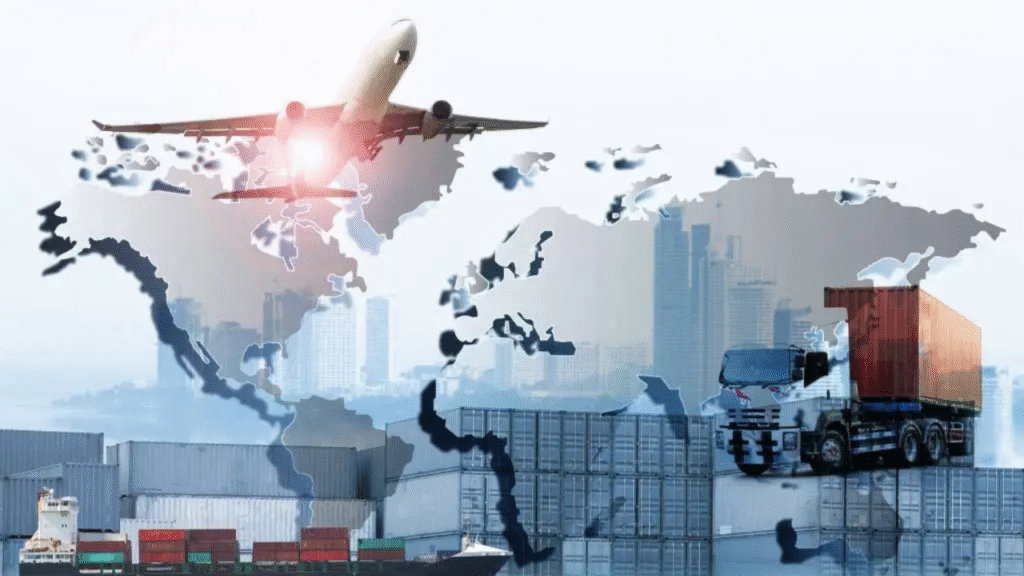Exporters Association Website Development
Exporters Association Website Development - Globax Solutions

In today’s globalized business environment, exporters associations play a pivotal role in connecting businesses, sharing knowledge, and fostering international trade opportunities. However, to truly leverage the potential of modern technology, these associations need a professional and functional website development strategy. A robust Exporters Association Website Development ensures seamless communication, easy access to resources, and a professional digital presence that reflects the association’s credibility. Globax Solutions, a leading provider in exporters website development, specializes in creating custom, responsive, and SEO-friendly websites tailored to the needs of exporters associations worldwide.
In this blog, we will explore the key aspects of exporters association website development, including features, design considerations, and strategies to maximize online engagement.
Importance of a Dedicated Exporters Association Website
1: Centralized Information Hub
A well-designed exporters association website acts as a centralized hub for all information relevant to members and stakeholders. From trade regulations and international market updates to membership guidelines and event notifications, the website serves as a reliable source of information. By using Globax Solutions’ exporters association website development, associations can ensure accurate and up-to-date content is always accessible.
2: Enhanced Member Engagement
Engaging members digitally is essential for any modern association. Features like discussion forums, member directories, and newsletters enhance participation. Through custom exporters association websites, associations can provide members with interactive tools to network, share knowledge, and collaborate on trade opportunities.
3: Building International Credibility
A professional online presence helps exporters associations establish credibility in the global market. Potential international partners and members often evaluate associations based on their online footprint. An SEO-friendly and responsive exporters association website development by Globax Solutions ensures your association is easily discoverable and respected worldwide.
Key Features of an Exporters Association Website
1: Membership Management System
Efficient membership management is crucial for associations. Integrating a secure system for registration, renewals, and member information ensures smooth operations. Globax Solutions specializes in developing exporters association websites with automated membership functionalities, reducing administrative workload and improving user experience.
2: Event & Trade Fair Integration
Exporters associations frequently organize trade fairs, webinars, and workshops. A dedicated events module on the website allows members to register online, receive notifications, and access event materials. Globax Solutions ensures your exporters association website development includes seamless event management features, boosting participation and engagement.
3: Resource Library & Knowledge Center
A comprehensive resource library provides members with valuable insights into trade policies, export procedures, and industry news. By incorporating a dynamic knowledge center, associations can deliver up-to-date resources, case studies, and market reports. Globax Solutions’ expertise in exporters association website development ensures a user-friendly and searchable resource library for maximum accessibility.
Design & SEO Strategies for Exporters Association Websites
1: Responsive & User-Friendly Design
In the era of smartphones and tablets, responsive design is not optional. A modern exporters association website must function seamlessly across devices. Globax Solutions designs websites that are mobile-friendly, intuitive, and visually appealing, ensuring members and stakeholders can easily navigate the site from any device.
2: SEO & Online Visibility
Search engine optimization (SEO) is crucial for associations aiming to attract international partners and members. Globax Solutions incorporates exporters website SEO strategies, including keyword optimization, meta descriptions, and high-quality content integration. This approach ensures your exporters association website ranks higher on search engines, enhancing online visibility and credibility.
3: Integration of Digital Marketing Tools
Modern associations benefit from integrated digital marketing tools such as email marketing, newsletters, social media feeds, and analytics dashboards. Globax Solutions ensures that your exporters association website development includes tools to monitor traffic, analyze user behavior, and implement targeted marketing campaigns. This digital approach fosters growth and strengthens member engagement.
Conclusion: Maximize Your Association’s Potential with Globax Solutions
Investing in professional exporters association website development is no longer optional—it’s a necessity for growth, credibility, and engagement in the global market. A custom-designed, SEO-optimized, and responsive website by Globax Solutions helps associations streamline operations, connect with members, and attract international partners.
Globax Solutions provides a comprehensive range of services, including membership management systems, event integration, resource libraries, responsive designs, and SEO-friendly development, tailored to exporters associations. By partnering with Globax Solutions, your association can leverage digital technology to maximize online visibility, improve member satisfaction, and establish a strong presence in the international trade community.
Contact us for more details of & Your registration
Our team will be happy to assist you
Mobile: +91-790-200-2800
